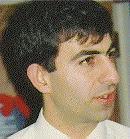Dr. J on Running
Born to Run
30 September 2009On my return trip from a week of altitude running in Colorado Springs, I spotted a book with a familiar title on the airport newsstand. Past “Born to Run” titles referred to lion cubs, bootleggers, convicts and spies, and a Springsteen album. I peeked at the back cover, and realized instantly that the book discussed my kind of running – Homo sapiens bounding aimlessly in search of an elusive euphoria.
Christopher McDougall wrote this 272-page monograph as an autobiographical experiment-of-one. He recalled his journey from the physicians who told him he would never run again, through his search for “The White Horse” in the land of the Tarahumara, to his triumphant finish of the “Greatest Race the World Has Never Seen.”
I purchased a copy and started reading it. By the time Flight 7142 landed in Syracuse, I had read 170 pages. I finished the book over the weekend, and embarked on a journey of rediscovery, my own experiment-of-one.
McDougall claimed that we were born to run – barefoot, and that advances in footwear design led to increases in running injuries. The better the shoe, the higher the risk of injury. So, I weighed my running shoes, past and present. They ranged from 12 ounces to 17 ounces per shoe. I contrasted these weights with the 3-ounce Nikes that Michael Johnson wore for 19.32 seconds in Atlanta. I developed a strategy to go from 14 to zero, increase my mileage from zero to forty, and remain injury-free. I lined up my shoes in order of weight, and started my experiment.
I met Dennis five weeks into my journey. Like the rest of us mortals, his running program alternates between injury and recovery. Dennis read the book, and traded his cushioned trainers for racing flats. The sudden drop in heel height strained his Achilles tendons. His story turned my experiment into a multi-variable optimization of weekly mileage, shoe weight and heel height.
An online shopping trip brought me five more pairs of discontinued models ranging from $10 to $20 in price, 5 to 10 ounces in weight, and 1 to 4 cm in heel height. Imelda - eat your heart out. I punched the data into MATLAB, ran a polynomial optimization, laced my flats, and hit the trails. Ten weeks into my experiment, I am down to 11-ounce shoes, 3-cm heels and 26-mile weeks. As a side benefit, my weight loss moved me out of the Clydesdale division, but this is another story for another day.
Dr Kamal Jabbour writes and runs on the trails of Pompey. His neon-colored Adidas provide emergency lighting in the event of a sudden loss of electric power. Dr. J receives email at kamal@jabbour.org. His RUNNING Column appears in Cyberspace whenever the endorphines move him to write.
